We may earn revenue from the products available on this page and participate in affiliate programs. Learn More ›
A plush hanging basket bursting with colorful blooms says “curb appeal” like perhaps nothing else. These suspended containers enable a gardener to show off certain plants to particular advantage, showcasing decorously trailing vines or pops of varied hues at eye level or above. Hanging baskets outdoors offer a bit of joyful embellishment on the front porch or lend a splash of color to a sunny corner of the living room. It’s worth noting that some of the best plants for hanging baskets are not for those who are short on diligence. They require a bit of extra care, and success depends on selecting plants that are known to do well in hanging baskets. The reward, however, is worth the effort.
How to Care for Hanging Plants
The care requirements of hanging plants are a bit different from those of in-ground plants. Because they’re bound in a confined space, hanging plants use the resources they have more quickly. Attentive gardeners should ensure that these lush beauties always have their needs met:
- Water them regularly. Each plant’s needs will vary, of course, but in general, hanging plants need more frequent watering. Bound by their container, their roots are unable to stretch far in search of hydration. Be sure your container has ample holes for draining.
- Fertilize them. Again, pay attention to specific plants’ needs. Most will thrive if they are regularly fed a general 20-20-20 fertilizer.
- Keep clippers handy. Unless you want just a few sparse, leggy vines twining down, be prepared to give your plants a trim now and then, which will encourage them to grow in a fuller, more attractive form.
- Situate them appropriately. Be sure your hanging baskets are in the best location for the plants they contain. For example, some plants prefer bright light, while others prefer some shade.
- Choose their companions carefully. If you’re combining several different types of plants in one basket, take care to ensure that all have the same needs in terms of sunlight, soil, and nutrients.
1. Supertunia Petunias (Petunia hybrid)

A vigorous hybrid that trails attractively, Supertunia comes in many rich shades and will draw hummingbirds and butterflies to your porch. What’s more, these petunias don’t require deadheading, which makes them one of the best flowers for hanging baskets. That said, when they get leggy it’s a good idea to give them an occasional trim. For flower-filled hanging baskets, make sure the plants get a full 6 hours of sun each day, water regularly (not too much, but don’t let them dry out), and treat them to weekly feedings.
2. Painted Lady (Echeveria derenbergii)

Gorgeous two-toned foliage makes these little rosettes excellent, drought-resistant hanging plants for containers. Once established, Echeveria derenbergii can tolerate extended dry periods; they generally flower in the warmer months, producing showy yellow flowers with red tips. For best results, water them sparingly and hang them in a spot that gets plenty of light.
3. Dwarf Lavender (Lavandula angustifolia, various cultivars)
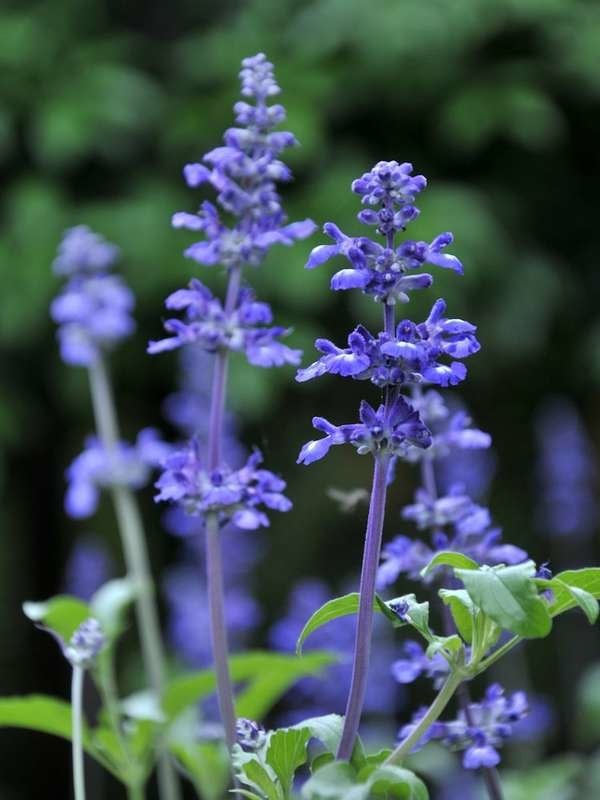
We love dwarf lavender because it contributes both delicate purple flowers and a soothing scent to hanging baskets. These sun-loving hanging plants will thrive near any window—you can’t go wrong! If you’re hanging them outdoors, make sure the plants are in a sheltered spot that gets at least 6 hours of sunlight each day.
RELATED: 20 Pretty Plants That Will Make Your Garden Smell Great
4. Lobelia (Lobelia erinus)
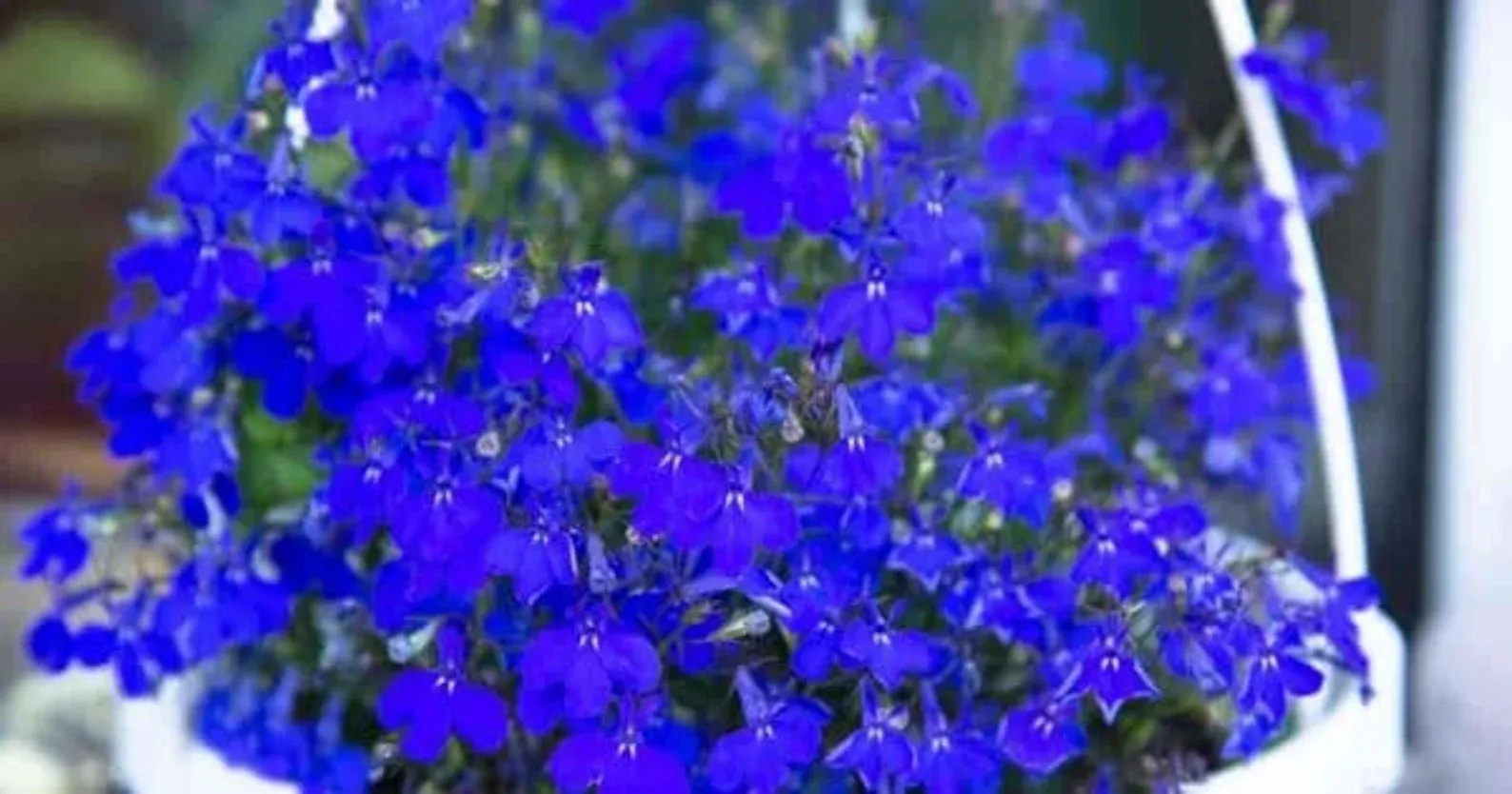
The delicate blooms and exquisite blues, purples, and whites of trailing lobelia make it an excellent plant for window boxes and garden borders, in addition to hanging flower pots. Lobelia does best in full-sun to part-shade locations, although it tends to wilt when it’s subjected to too much heat. Clip back spent blossoms to encourage flowering. If the plants start looking spindly, trim it back up to a third to encourage new growth.
5. Impatiens (Impatiens walleriana)

Impatiens can fall prey to downy mildew, so growing them as hanging plants has the added benefit of getting them out of the ground and away from soil that could harbor the aggressive mold. However you grow them—in the ground or in a container—you can enjoy the beautiful colors and abundant flowers of one of America’s favorite annuals. Impatiens thrive in partial shade and soil that’s moist but not too wet. And remember, containers dry out quickly, so stay on top of the watering.
RELATED: 10 Fast-Growing Plants for (Almost) Instant Curb Appeal
6. Burro’s Tail (Sedum morganianum)
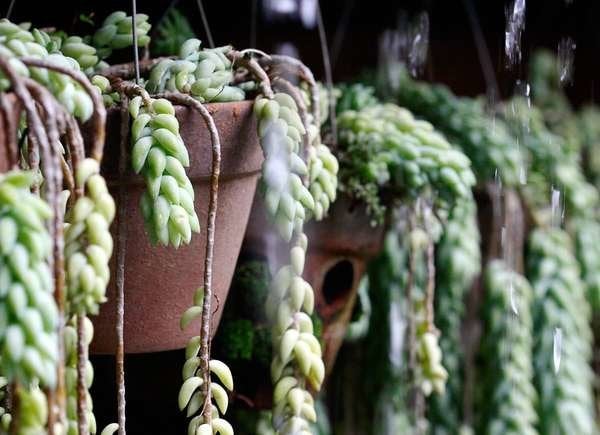
Commonly known as donkey’s tail or burro’s tail, this succulent with vibrant green leaves is among the most distinctive trailing plants for hanging baskets. It grows best in full sunlight with regular, moderate watering throughout the year, except in winter. The leaves fall off easily, so handle the plant carefully to avoid unattractive bald spots.
7. Chrysanthemum (Chrysanthemum spp.)
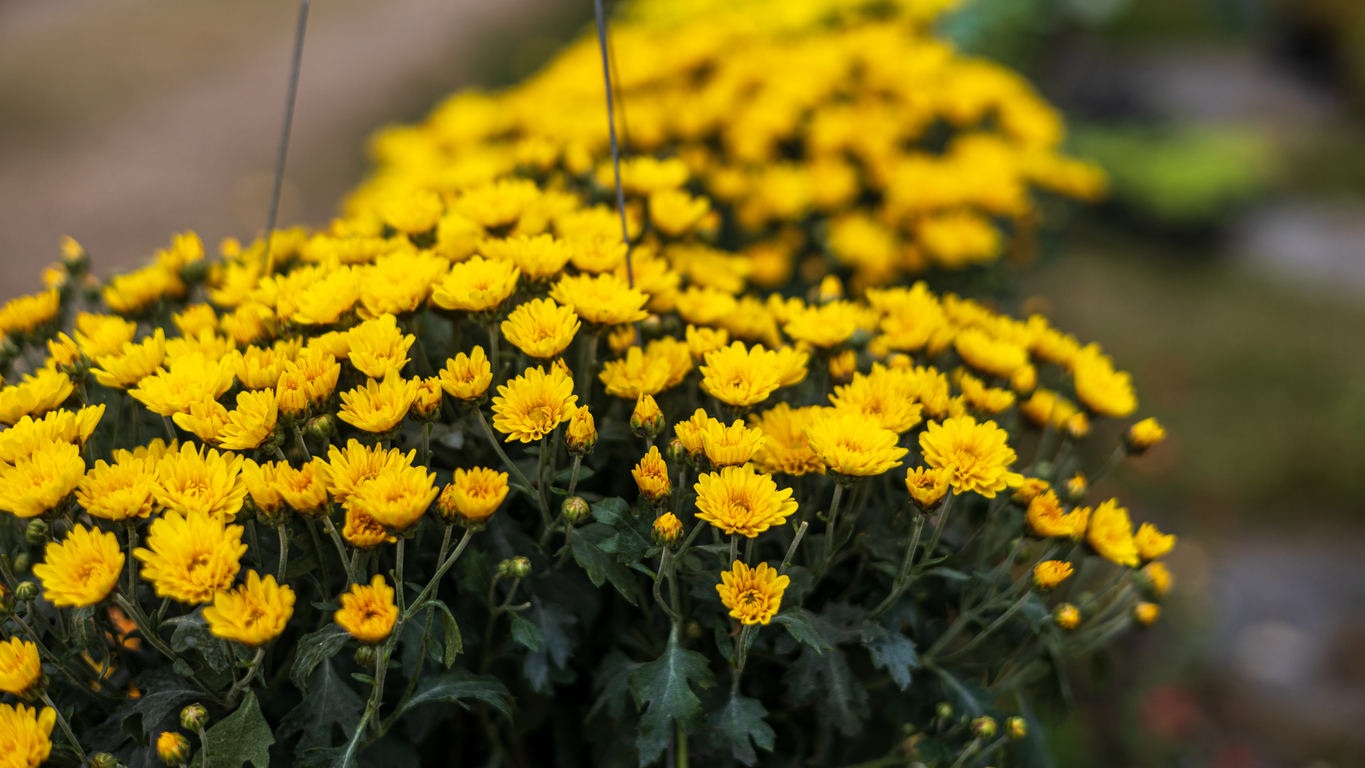
A florist favorite, mums are hardy in cold weather and can bring color to your patio or front porch after other blooms have faded. Aim for a spot that gets at least 6 hours of sun per day, water them whenever the soil feels dry, and deadhead to keep the blooms coming. ‘Maroon Pride’ is a stunning deep shade of fall mums; the fragrant ‘Pink Magnificent’ will bring a welcome pop of color to an entryway or porch.
8. Spiderwort (Tradescantia spp.)
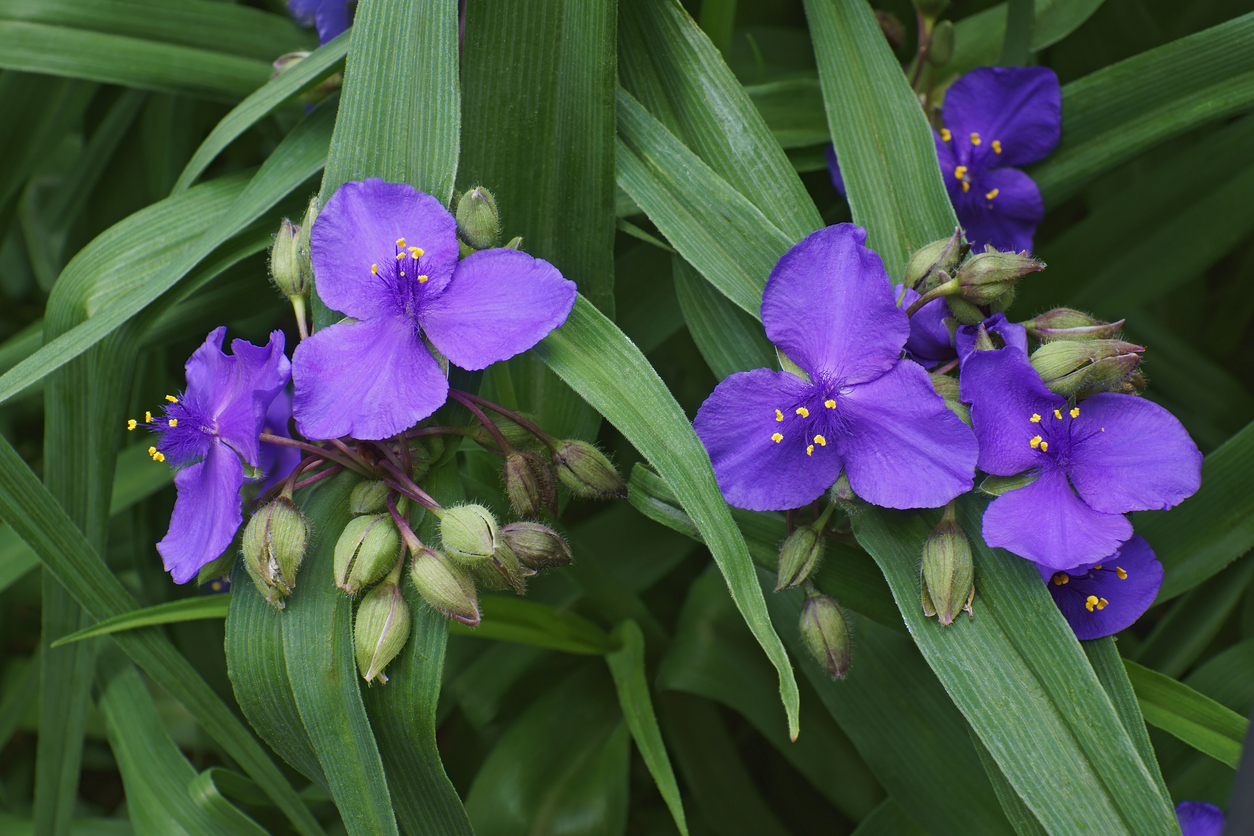
A lovely perennial with long-lasting flowers, spiderwort is great in containers and hanging baskets, which corral the plant’s tendency to spread. It’s an easy-care plant that’s not picky about sunlight or soil, although it can benefit from deadheading or the occasional trim. Delightful!
9. Imagination Verbena (Verbena speciosa ‘Imagination’)
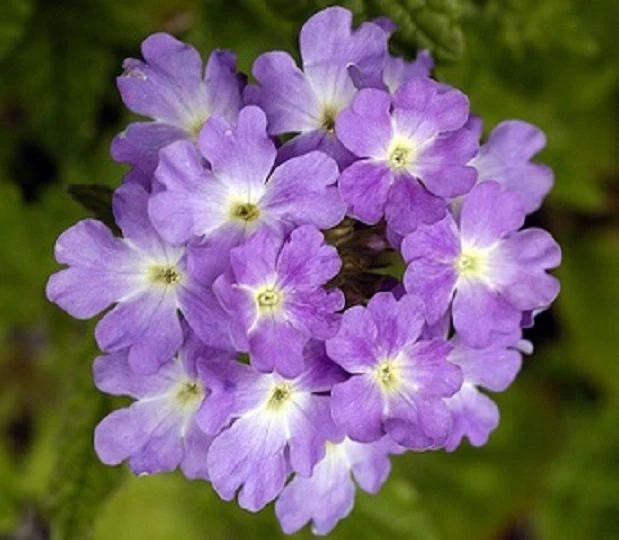
Bright and deep purple-pink, ‘Imagination’ verbena is just one of many verbenas that work great in hanging baskets. For best results, give them full sun, deadhead spent blooms, fertilize monthly during the growing season, and keep the soil moist.
10. Fountain Grass (Pennisetum spp.)
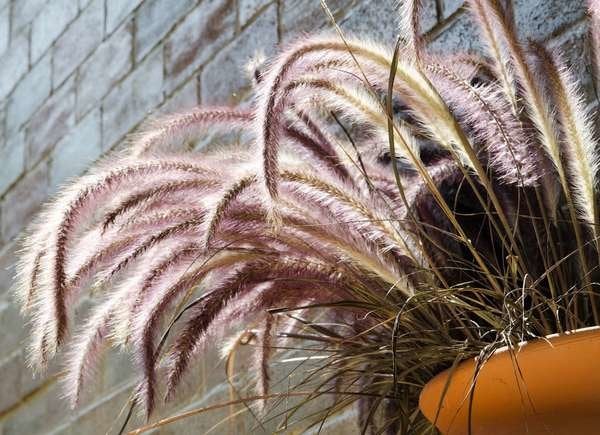
Add texture to your hanging baskets with a deer-tolerant dwarf fountain grass like ‘Hameln’ (Pennisetum alopecuroides ‘Hameln’), which has foxtail blooms that change from a light brown in the eary summer to pink-bronze in the fall. It’s especially effective as a “thriller,” looming above a selection of mounding or trailing plants. Give them full sun and these low-maintenance hanging plants will reward you with graceful, arching plumes all year long.
RELATED: The 22 Best Ornamental Grasses for Adding Drama to Your Property
11. Trailing Pansy (Viola x wittrockiana)
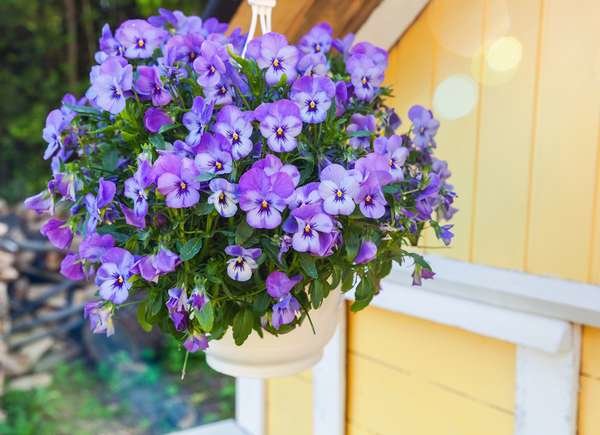
Relatively new on the scene after more than a decade of breeding, trailing pansies look amazing hanging in baskets and containers. They have a wider spread and deeper color than older pansy varieties, and are also cold-resistant and can often survive subzero temperatures. Feed them every 2 weeks to keep the plants healthy. While they should get 6 hours of sun each day, shield them from intense afternoon heat.
RELATED: How to Hang Plants From the Ceiling
12. Bacopa (Bacopa monnieri)

Bacopa ‘Snowtopia’ has evergreen stems that burst with a profusion of white blossoms from June through September, and is one of the best cascading plants for hanging baskets. Favoring sun or semi-shade, it’s an ideal choice for a porch or patio. While it’s a low-maintenance option, be sure to it water regularly and fertilize it every few weeks to keep those flowers coming.
13. Fuchsia (Fuchsia spp.)
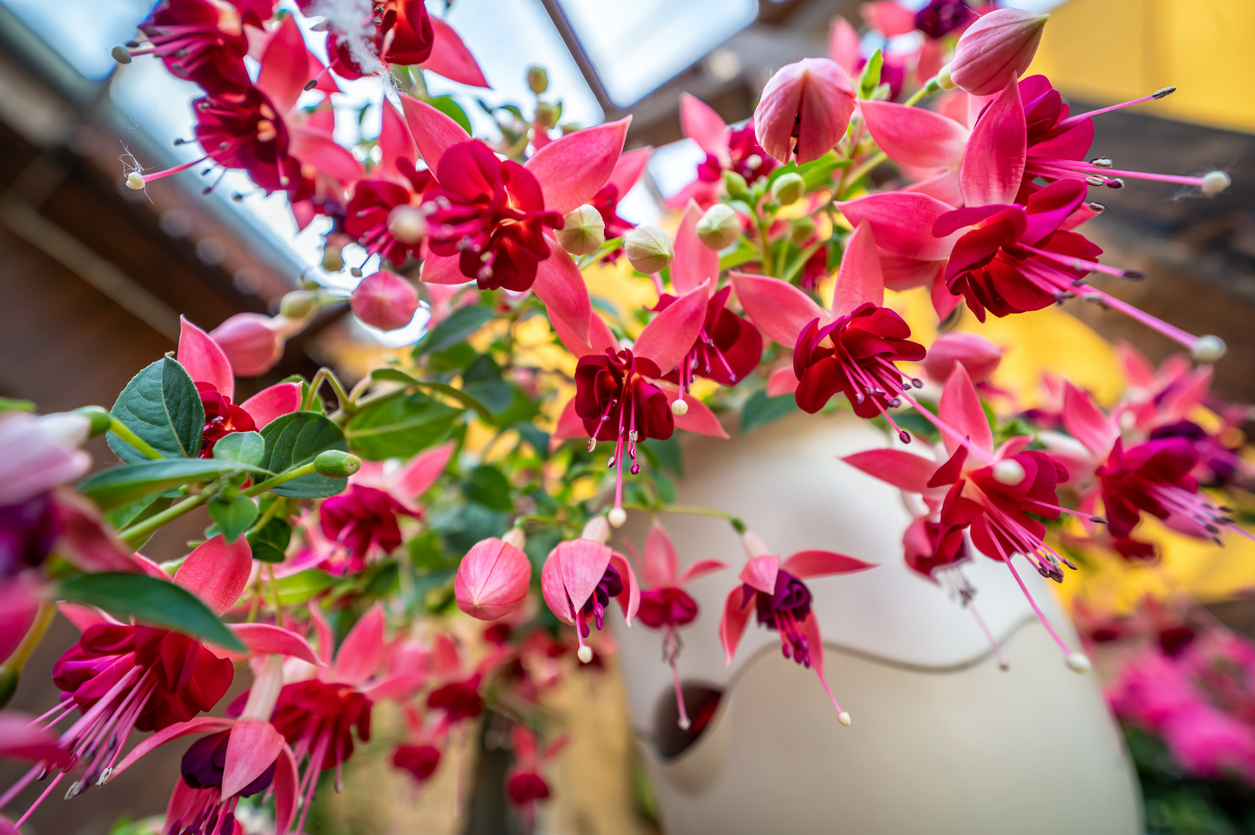
With its showstopping flowers, fuchsia has been a long-time favorite with gardeners. The brightly colored, lantern-like flowers can attract hummingbirds to your yard, and the plant can thrive in part or full shade, although it does need some sunlight to flower. These exotic-looking beauties need lots of nutrients when producing flowers, so fertilize them regularly and deadhead spent flowers to maximize their blooms.
14. Calibrachoa (Calibrachoa spp.)
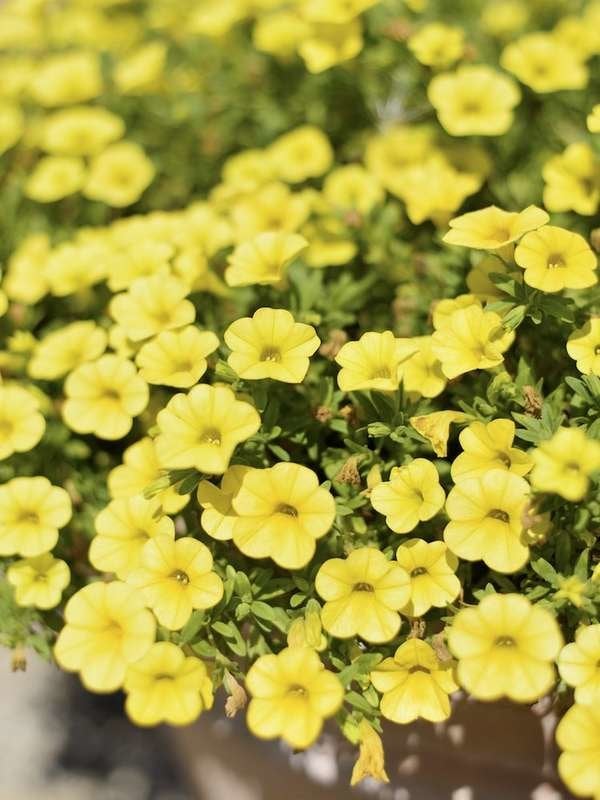
Fairly recently introduced to the nursery trade, calibrachoa is native to South America and is grown as a warm-season annual in most of the United States, though some newer hybrids are more cold-tolerant. This colorful plant looks like it was designed by Mother Nature to adorn front porches in hanging baskets: Its trailing habit spills out 12 to 24 inches in all directions, making for a showstopping ball of beauty. Also known as trailing petunia or Million Bells, this plant needs 8 hours of sun each day and does best with daily watering and regular fertilization.
15. Begonia (Begonia spp.)
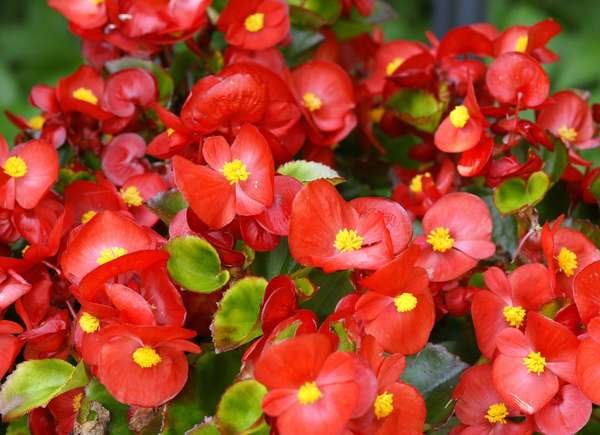
Begonias have earned their place as one of the best hanging plants for their showy flowers, free branching habit, and tolerance for heat. Available in a wide range of colors, ranging from yellows to oranges to reds and pinks, “nonstop” varieties can give you constant color all season long. Hang begonias in a sheltered spot that enjoys full sun or part shade, and feed every month or so during the blooming season.
RELATED: All You Need to Know About Begonia Care
16. Sweet Alyssum (Lobularia maritima)
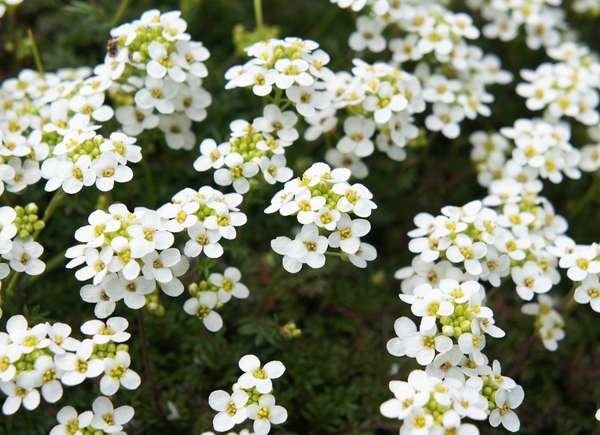
Don’t be fooled by its dainty flowers: Sweet alyssum grows in abundance. The plant begins producing blooms in mid-spring, provided the weather is warm. Although its flowers are most commonly white, there are special varieties that burst with deep purple or light pink blooms. The plants’ needs are simple: Water when the soil is dry to the touch and give them 6 hours of bright sunlight per day. In return, you’ll be delighted by clouds of flowers and plenty of butterflies and bees, drawn by the sweet fragrance.
17. Moss Rose (Portulaca grandiflora)
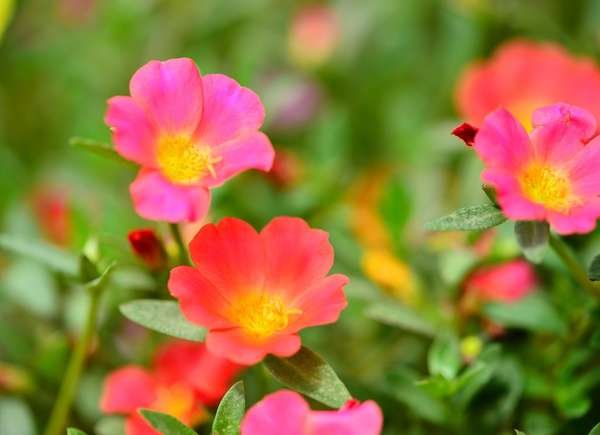
For a hanging basket that receives a lot of direct sunlight, moss rose is a hardy, cheerful choice. These colorful flowers may look delicate, but they can endure the sun’s direct rays even on the brightest of summer days. Allow this succulent to dry out a bit between waterings, but remember that containers drain quickly, so check often. Spent blooms fall off on their own, so deadheading isn’t required, although it can encourage flower production. Keep this one well away from pets, as it can be toxic to cats and dogs.
18. Lantana (Lantana camara)
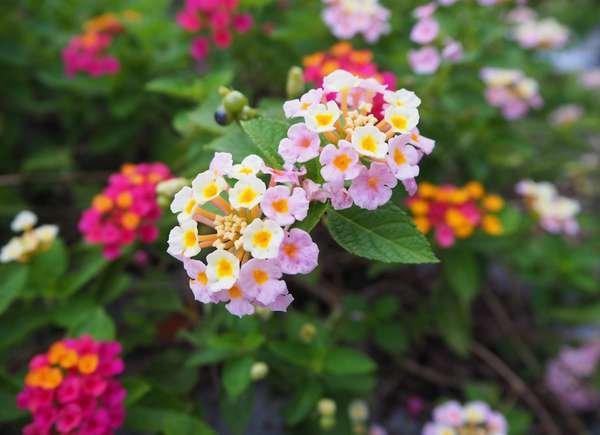
Lantana is a hardy plant that can survive in sunny spots, even with little water. This low-maintenance bloomer draws pollinators to the yard, so if you plant lantana, expect to see plenty of bees, butterflies, and hummingbirds feeding on its nectar. It’s easy to care for lantana: Fertilize it once a month, don’t overwater, and deadhead occasionally, and you’ll be rewarded with a profusion of bright flowers.
RELATED: 20 Flowers That Attract Bees to Your Garden
19. Geranium (Pelargonium x hortorum)
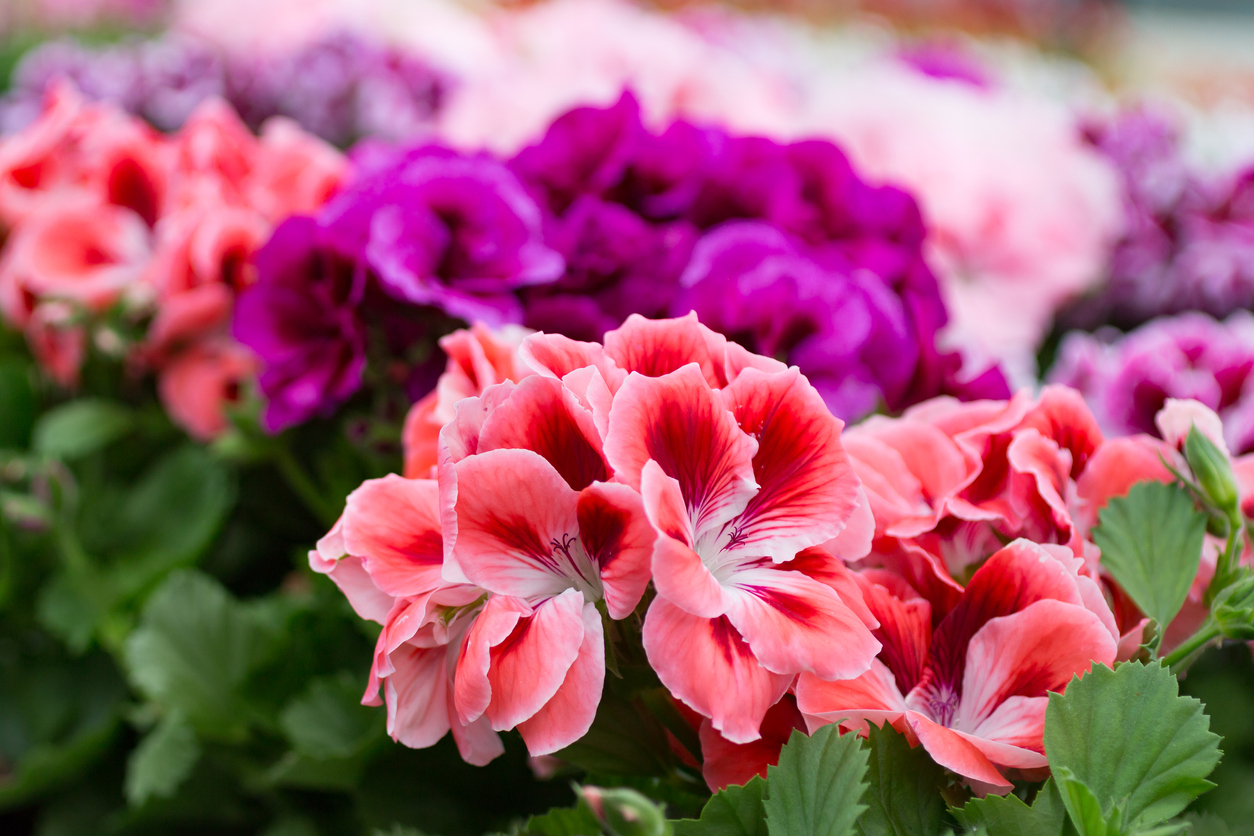
There are more than 250 species of geranium and even more varieties, for gardeners eager to add a splash of almost any hue to their hanging baskets. Look for trailing types that spill attractively from containers. Native to subtropical southern Africa, geraniums can’t take freezing weather, nor are they suitable for places where it’s hot for an extended period, though they do need 6 hours of sun daily. Caring for geraniums means consistent waterings; trimming them back will create more blooms.
20. Asparagus Fern (Asparagus densiflorus ‘Sprengeri’)
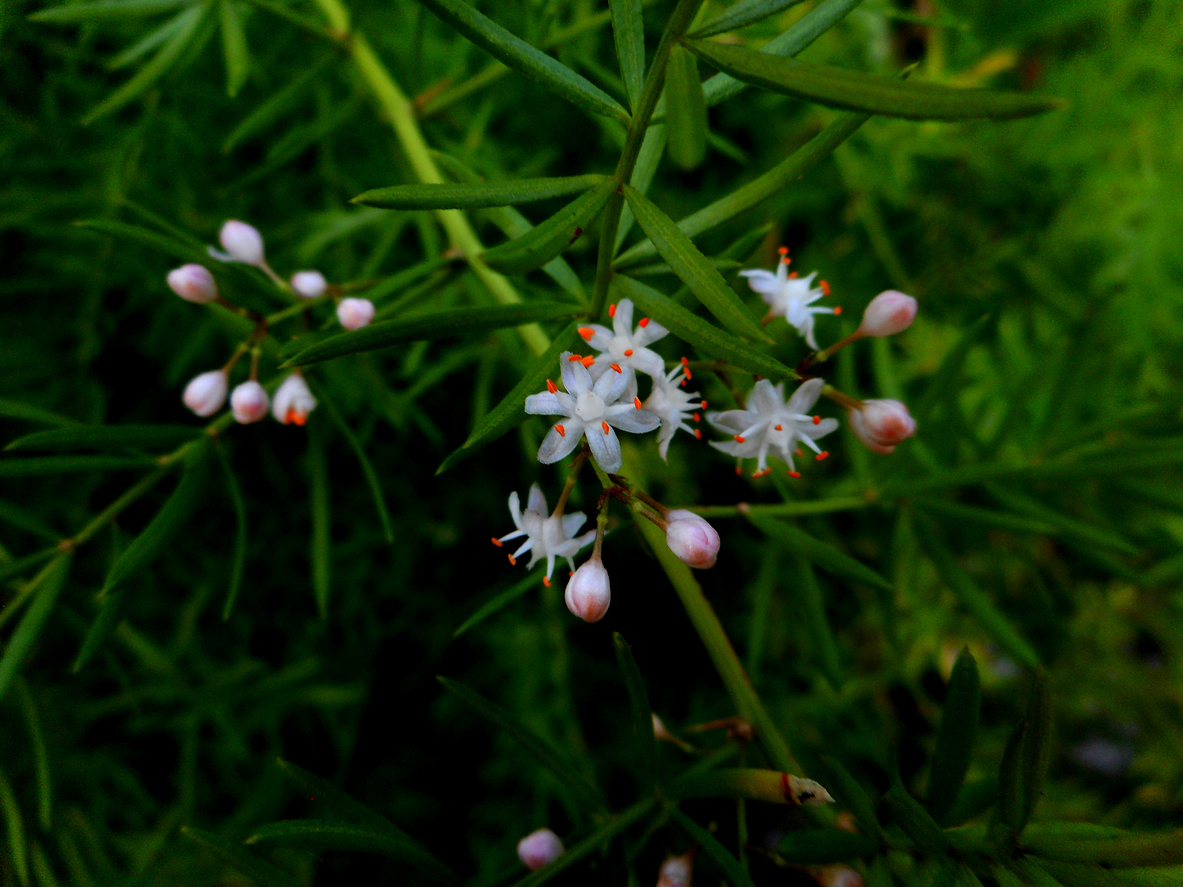
Contrary to its common name, asparagus fern is not actually a fern. It’s an herb that comes in several forms, including a type that produces long, arching branches that cascade gently over the side of a hanging basket. Asparagus fern likes medium light and does not like wet soil, so allow the soil to dry out between waterings. The plant forms small white flowers, followed by attractive red berries. Gardeners in much of the United States need to bring asparagus fern inside to overwinter, as it will die back during a freeze.
21. Ferns (Polypodiopsida)
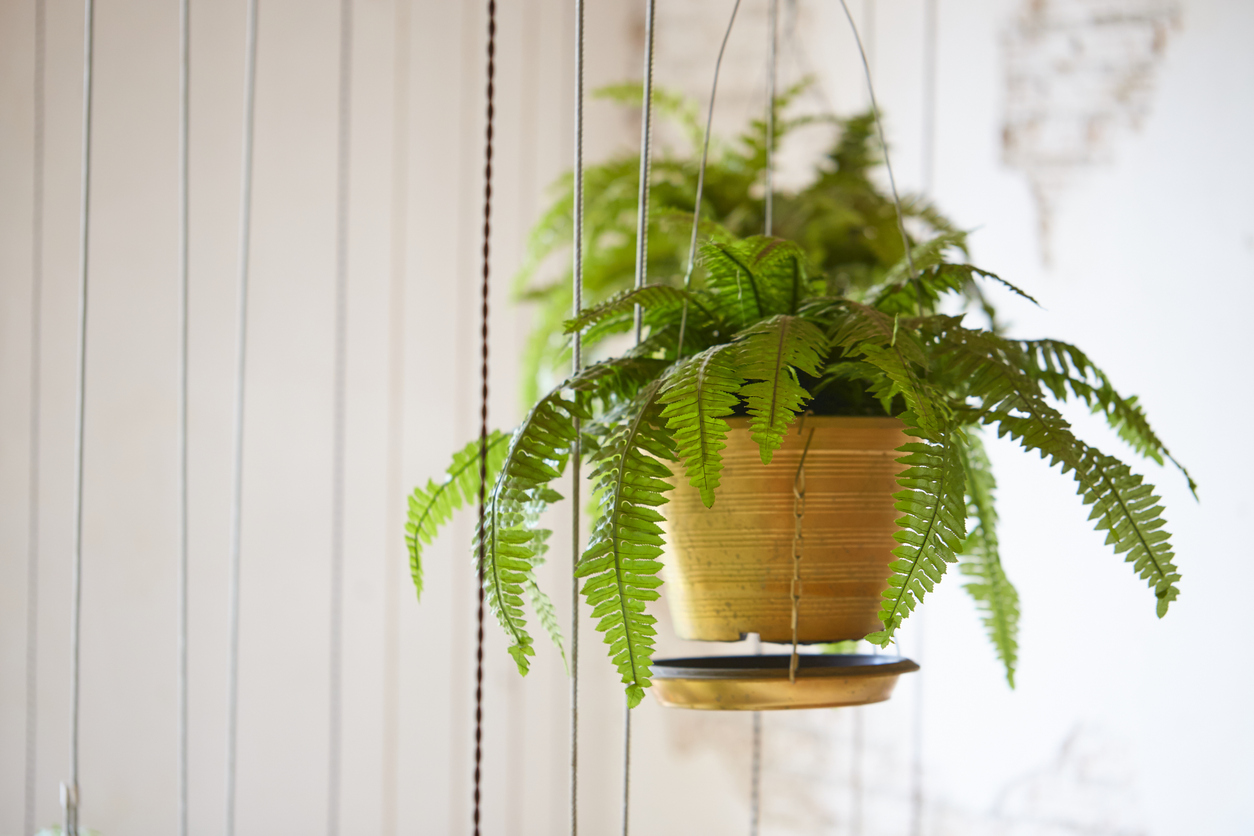
With more than 10,000 species of fern on the planet, gardeners might have a tough time selecting one for a hanging basket, but the ever-popular Boston fern is a good place to start. These plants do best in indirect light and the constant temperature of a warm indoor environment. They need moist, well-drained soil, and an occasional spritz of water addresses their humidity-loving nature. Another fern to consider is tiger fern, which has similar light and care requirements as the Boston fern. Its mottled and variegated appearance is a conversation starter.
RELATED: Boston Fern Care: Mastering the Finicky Fronds of This Popular Houseplant
22. Golden Pothos (Epipremnum aureum)
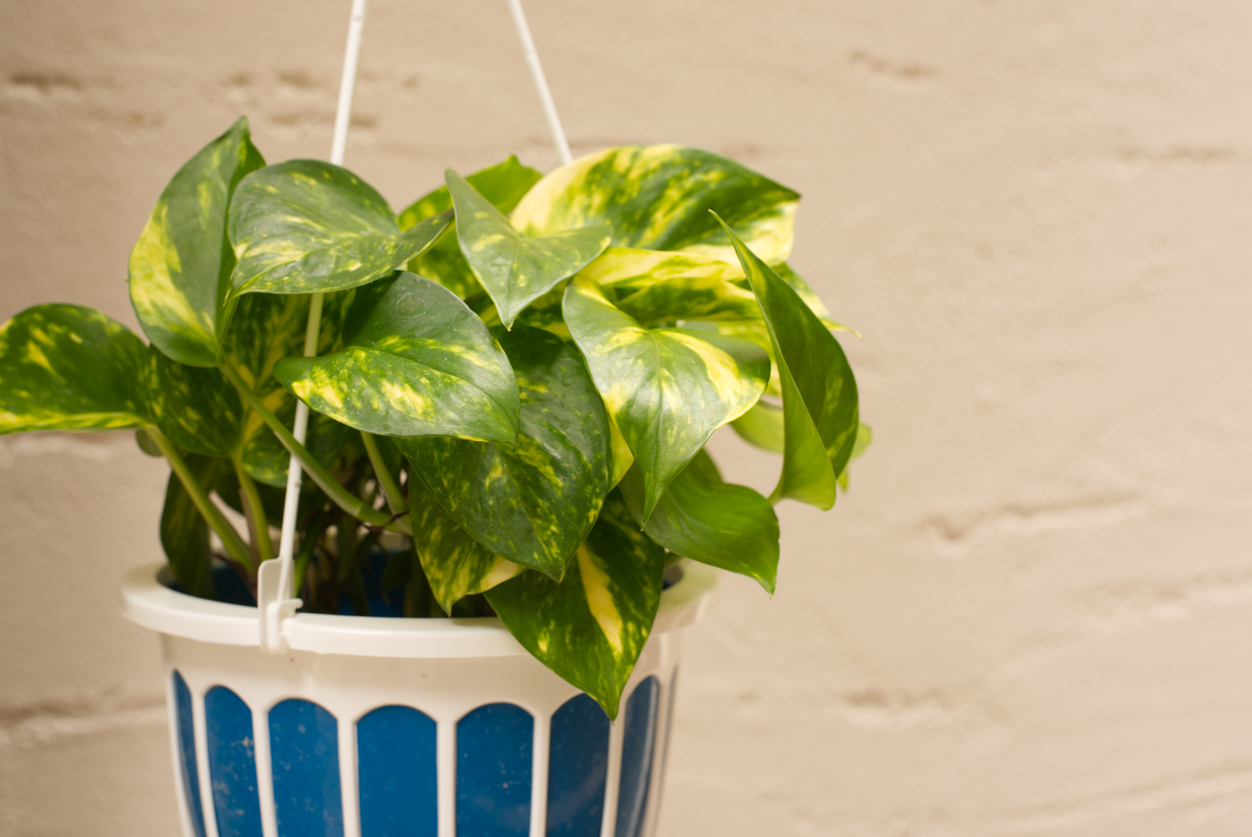
Needing only medium to low light, this variegated beauty is particularly well suited for indoors. Golden pothos is a trailing vine that spills out of hanging baskets beautifully and profusely. The runners can get quite long and stringy, so it’s good to trim them fairly often to encourage fullness. Be mindful, too, that pothos—sometimes called devil’s ivy—is poisonous if ingested, so keep this one out of reach of pets and curious young children. Fertilize golden pothos every other month, and water when the soil dries out.
23. String of Pearls (Curio rowleyanus)
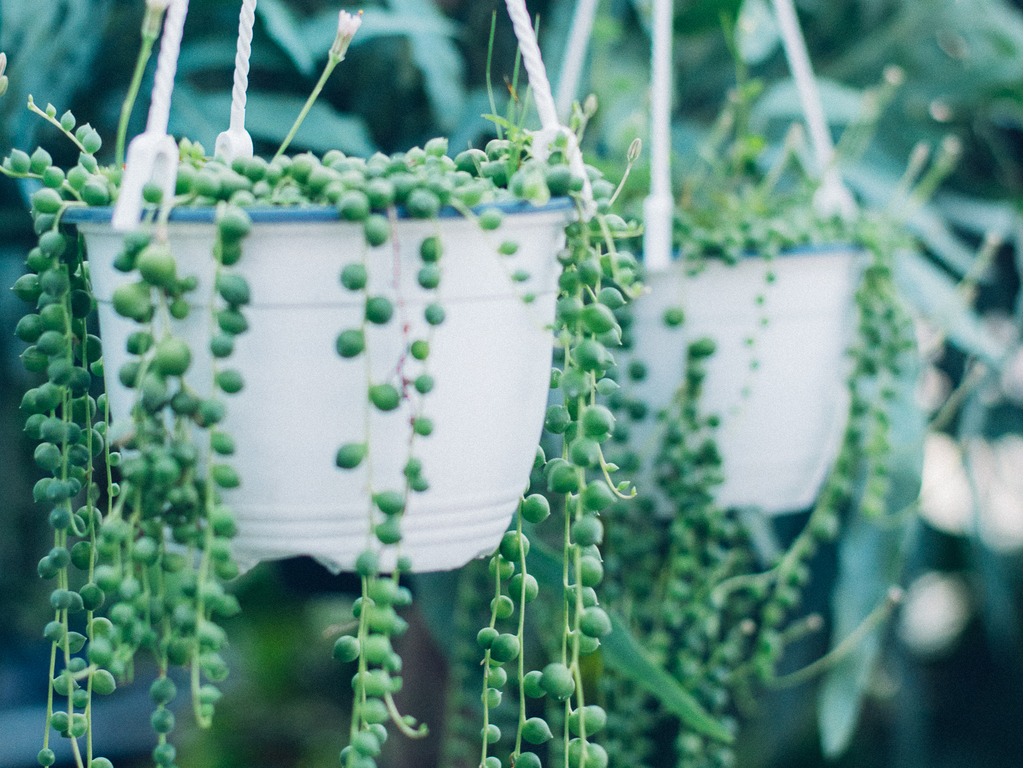
This unusual-looking succulent from South Africa produces pea-size, round leaves attached to long stems, or “strings,” that drape attractively over the side of a hanging container. String of pearls likes bright light and does not tolerate freezing weather, so consider placing it indoors near a sunny window. Water when the pearls start looking wrinkly, and trim from time to time to encourage fullness. This is another plant to keep out of reach of children and pets, as it can cause stomach irritation if ingested.
RELATED: String of Pearls Care
24. Dichondra ‘Silver Falls’ (Dichondra argentea ‘Silver Falls’)
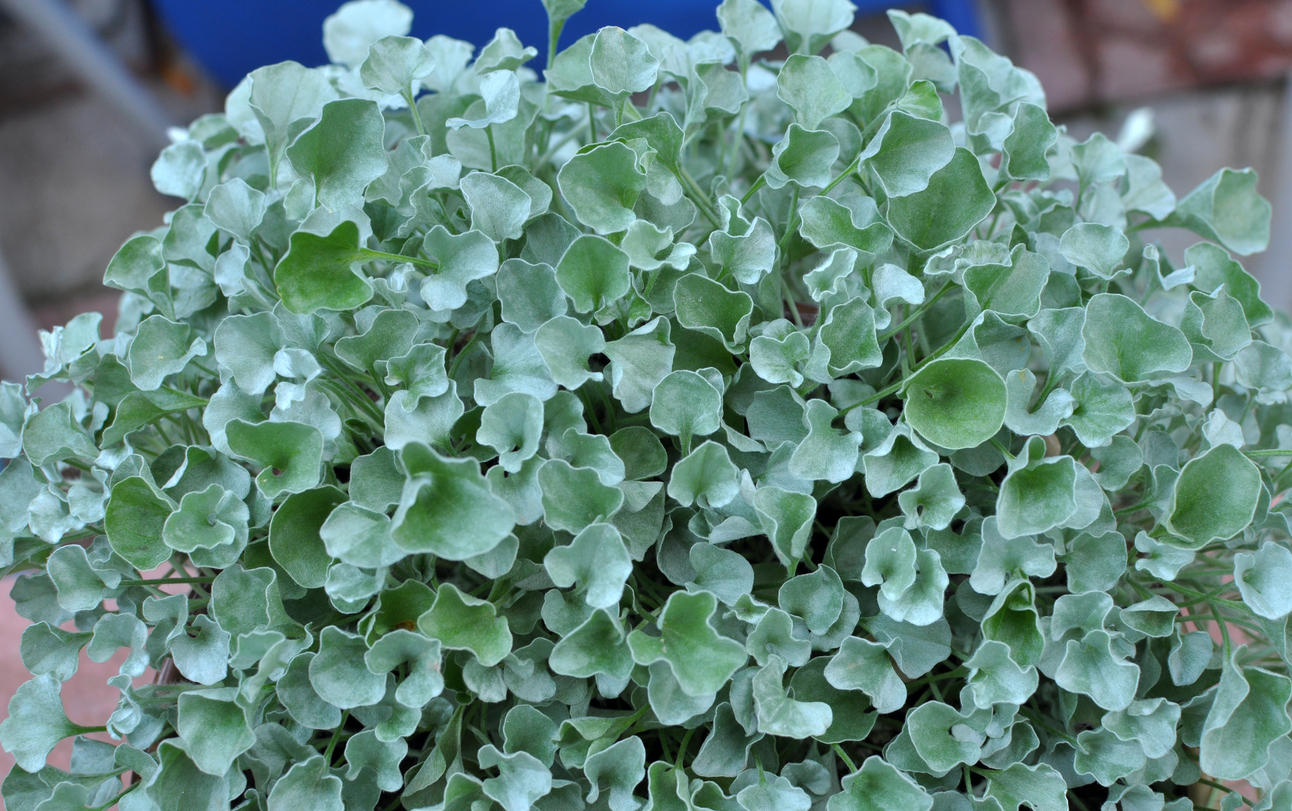
This silvery trailing plant is well loved in the hotter parts of the country for its drought tolerance and its ability to spread quickly as ground cover. But it also makes a lovely addition to a hanging basket, its unusually colored foliage adding a vibrant contrast to other plants in the container. Put baskets containing dichondra, aka silver nickel vine or silver ponyfoot, outdoors where the plant will get morning sun, or inside near a window. Water it once every 2 to 3 weeks.
25. Osteospermum (Osteospermum ecklonis)
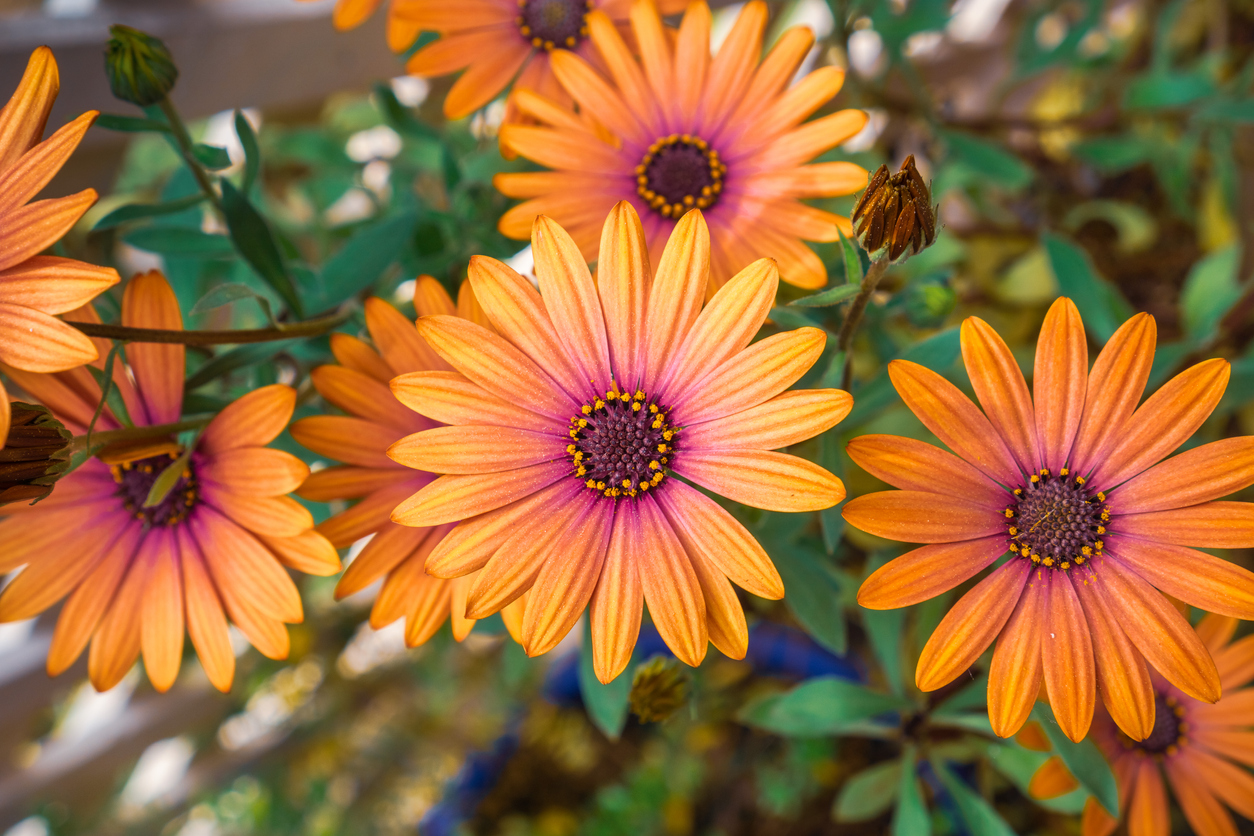
Sometimes called African daisy, various osteospermum types have different growth habits. Trailing osteospermum species can be decorative additions to a hanging container, while dwarf, upright varieties can shine as the dramatic focal point of a hanging basket when surrounded by trailing plants. The plants’ 2- to 3-inch flowers may be yellow, blue, violet, pink, or white. This one will have to come indoors when winter winds blow, as it is not cold-hardy.

